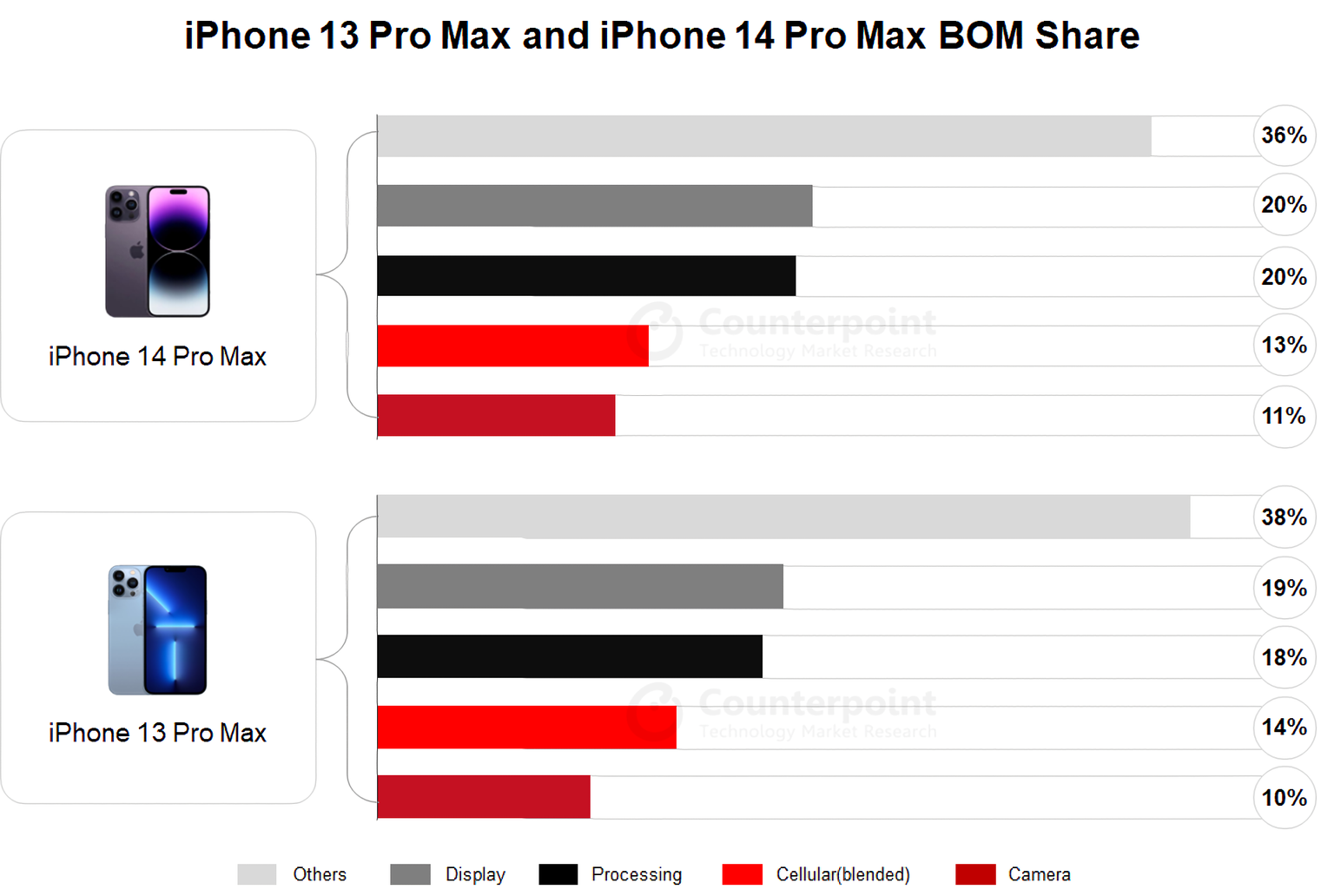TL;DR: The latest iPhone 14 Pro Max starts at $1,099 but it costs Apple far less to build the handset. According to Counterpoint's latest bill of materials (BoM) analysis, the 128GB iPhone 14 Pro Max mmWave variant costs Apple $474 to produce while the sub-6GHz model checks in at $454. Assuming a 44 percent mmWave mix, the blended BoM ends up being around $464 which is roughly a 3.7 percent increase compared to the iPhone 13 Pro Max.
Notably, Apple did not increase the suggested retail price of its biggest phone year over year.
Counterpoint said the phone's display, processor and camera system all have a larger share on the BoM list than they did a year earlier.
The display on the current generation Pro Max features higher peak brightness in HDR and outdoor modes. The latest models also carry an always-on display that showcases the time, lock screen widgets, wallpaper and more, all of which add to the display's overall cost.

The A16 Bionic, meanwhile, utilizes a more advanced 4nm manufacturing process that Counterpoint estimates contributes to a cost increase of $11 per unit over the A15 Bionic. Similarly, the new 48-megapixel camera system from Sony has a sensor area that is 65 percent larger than its predecessor as well as an improved sensor-shift stabilization system. All told, the new camera components add an estimated $6.30 to the overall cost of the iPhone 14 Pro Max.
Apple was able to offset some of the higher component costs through savings in other areas. For example, prices for cellular specific equipment dipped year over year as 5G technology became more widespread.
Looking at the bigger picture, Counterpoint's estimate puts the bill of materials at around 42 percent of the total retail price of the 128GB iPhone 14 Pro Max. That seems like a healthy margin but there are several other expenditures that factor into the overall production of the iPhone including shipping, marketing and research & development.
Image credit: Kenejd Spahiu
